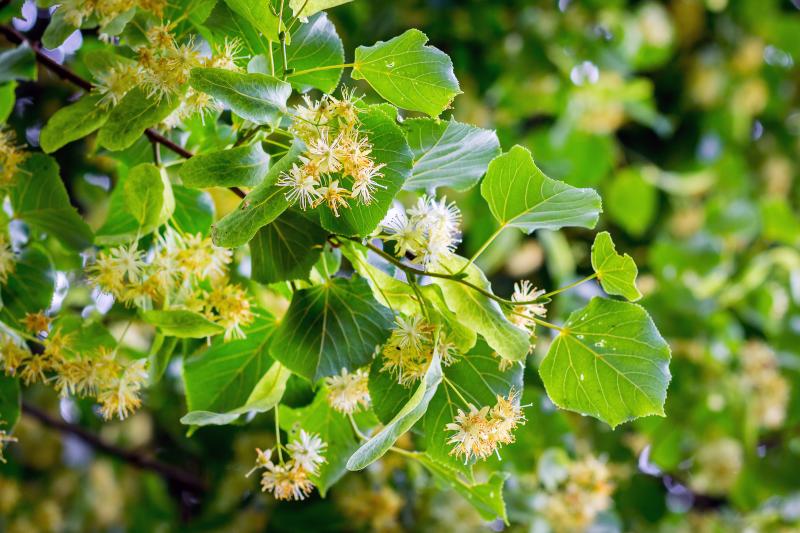The Berlin Wall and the Little Leaf linden
Over the years, more than 5,000 East Germans escaped over the Berlin Wall, including acrobat Horst Klein, who walked a tightrope 60 feet over the heads of the guards to cross over to West Berlin.
Named for its beautiful linden trees, Unter den Linden, meaning "under the linden trees," is a boulevard in central Berlin, Germany, that runs from the City Palace to the Brandenburg Gate at the former site of the Berlin Wall.
Usually, shade trees don't have fragrant flowers, but the Little Leaf linden has wonderfully aromatic blossoms that will perfume your yard. The small, yellow-white flowers bloom in June. Little round seeds form after the flowers fade, and they last well into winter.
The Little Leaf linden tolerates almost every kind of soil, even heavy clay. It is not bothered by pollution, making it an excellent street tree, perfect for the urban or seaside garden.
Linden trees have thick trunks with dark-gray bark that starts out smooth but grows into deep furrows as the tree matures. The strong branches are horizontal to the trunk, creating a dense, rounded or pyramidal crown. The large, dark-green leaves are heart-shaped, similar to aspen tree leaves.
The linden tree's fragrant flowers are favorite attractions for butterflies and bees. They provide a generous amount of nectar from May into July.
There are many species of linden tree, but the Tilia cordata is one of the best. This Little Leaf linden is best planted in an open space away from the home or sidewalks to give it room to grow. It is widely adapted and grows well in USDA Zones 3-9.
Since the Middle Ages, people have brewed linden tea for its medicinal properties. It is said to have a natural ability to reduce pain and relieve anxiety. Linden tea contains powerful antioxidants such as kaempferol and tiliroside that help fight inflammation.
Autumn is the best time to plant deciduous trees, because after they drop their leaves, they send all of their energy down into the roots. Fall-planted linden trees will adjust to their new location over the winter and be ready to sprout when they break dormancy in the spring.
Dig a hole that is at least two to three times wider than the tree's root ball. Pack the soil in firmly around the roots after planting and gently water the tree, soaking it completely. The water will settle the soil, and you may need to add more, so it just reaches the top of the root ball. Apply a 2- to 4-inch-deep mulch such as hardwood chips around the tree. To prevent stem rot, be sure the mulch does not touch the tree trunk. Keep your newly planted linden tree well watered but not soggy. It won't need much pruning other than to remove broken branches.
For fragrant flowers and sturdy shade, plant a Little Leaf linden, and soon enough you will be relaxing in the shade, swaying to the waltz tune, "Unter den Linden." No tightrope needed.
















































